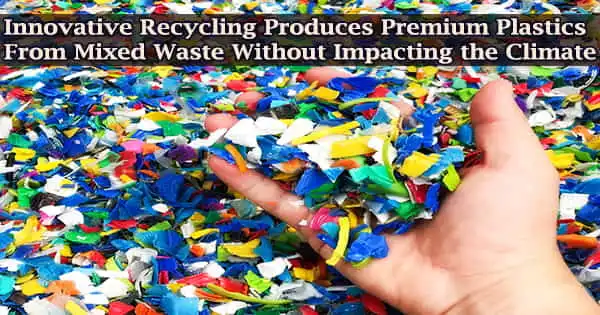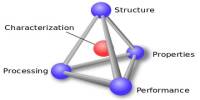Currently, recycling only makes up a small portion of the material that may be used to create new plastic. Researchers at the Chalmers University of Technology in Sweden have now shown how all fossil raw materials used in the creation of new plastic may be replaced by the carbon atoms found in mixed garbage. The recycling process, which takes its cues from the natural carbon cycle, has the potential to reduce or even eliminate the climate impact of plastic products.
“There are enough carbon atoms in waste to meet the needs of all global plastic production. Using these atoms, we can decouple new plastic products from the supply of virgin fossil raw materials. If the process is powered by renewable energy, we also get plastic products with more than 95% lower climate impact than those produced today, which effectively means negative emissions for the entire system,” says Henrik Thunman, Professor of Energy Technology at Chalmers University of Technology and one of the authors of the study published in the Journal of Cleaner Production.
We must make greater use of the resources presently available in society if we are to attain circular cycles. The carbon atoms in our waste, which are typically burnt or end up in landfills rather than being recycled, are a significant resource that frequently goes up in smoke today. Henrik Thunman and his research team wish to concentrate on this issue.
Technology that targets the carbon present in plastic, paper, and wood wastes with or without food residues makes it possible to produce plastics with the same diversity and caliber as those currently made from fossil raw materials.
Similar to nature Only 15–25% of the fossil raw materials required to supply society with the plastic it requires can currently be replaced by recycling plastic. The researchers’ cutting-edge approaches call for heating the trash to 600–800 degrees Celsius and are based on thermochemical technologies.
Our goal is to create a circular economy for plastics. Our plastic products are key to the transformation to a sustainable society, so it’s important for us to support research like this. We already have projects that create circularity for our plastic products, but more solutions are needed. Therefore, we are pleased with these excellent results, which can help bring us a step closer to our goal.
Anders Fröberg
The waste then transforms into a gas, which, when hydrogen is added, can take the role of the constituent parts of plastics. By recycling, it may be possible to separate the production of new plastic items from the supply of fresh fossil raw materials.
The study’s authors are creating a thermochemical recycling process that yields a gas that can be used as a raw material in the same plants that now make plastic products from fossil fuels or gas. At Chalmers Power Central, different waste materials, including used paper cups and plastic bottles with or without food residues, are fed into the reactors.
“The key to more extensive recycling is to look at residual waste in a whole new way: as a raw material full of useful carbon atoms. The waste then acquires value, and you can create economic structures to collect and use the material as a raw material worldwide,” says Henrik Thunman.
The natural carbon cycle served as inspiration for the process’s fundamental design. When plants wither, they are converted to carbon dioxide, which, through photosynthesis and the use of the sun’s energy, then develops new plants.
“However, our technology differs from the way it works in nature because we don’t have to take the detour via the atmosphere to circulate the carbon in the form of carbon dioxide. All the carbon atoms we need for our plastic production can be found in our waste, and can be recycled using heat and electricity,” says Henrik Thunman.
According to the researchers’ calculations, these processes can be powered using energy from renewable resources like solar, wind, or hydropower or by burning biomass, and they will be more energy-efficient than the ones currently in use.
In a circular system, it is also conceivable to extract extra heat through recycling procedures, which would make up for the heat output currently derived from garbage incineration while omitting the carbon dioxide emissions related to energy recovery.
Can replace fossil raw materials
The study was conducted as a part of the FUTNERC initiative. In an effort to replace the current use of fossil raw materials, the researchers have demonstrated that the process can be used in partnership with the Swedish plastics manufacturer Borealis in Stenungsund, where they have verified the findings and demonstrated that the raw material can be used to make plastic.
“Our goal is to create a circular economy for plastics. Our plastic products are key to the transformation to a sustainable society, so it’s important for us to support research like this. We already have projects that create circularity for our plastic products, but more solutions are needed. Therefore, we are pleased with these excellent results, which can help bring us a step closer to our goal,” says Anders Fröberg, CEO of Borealis AB.
















